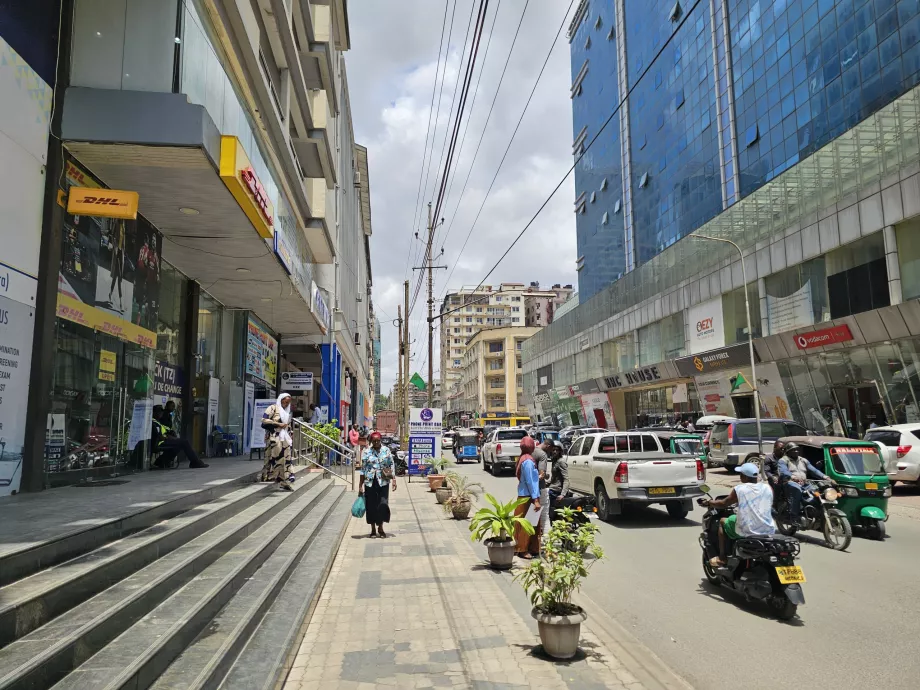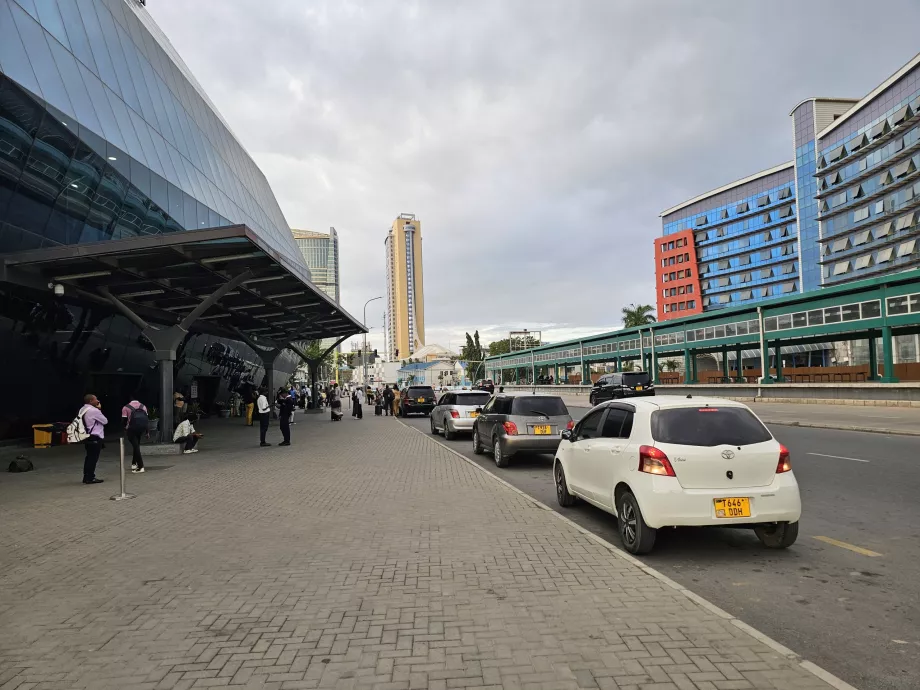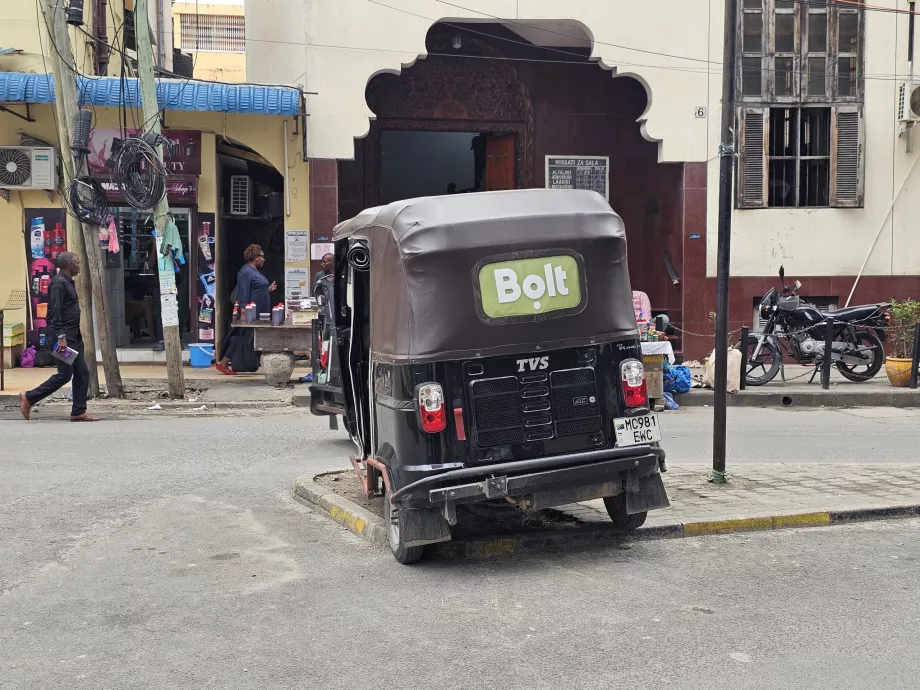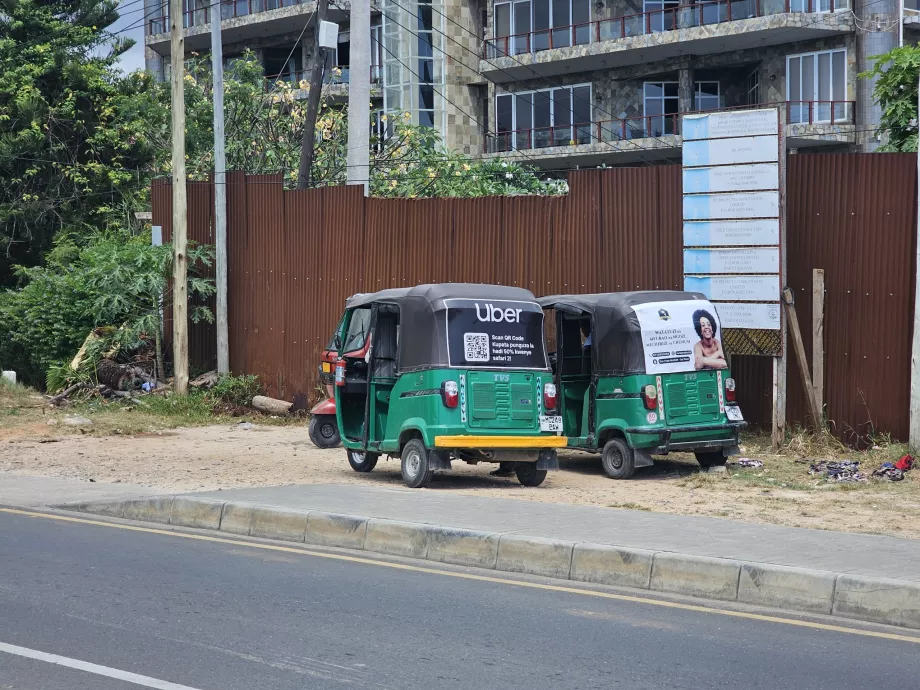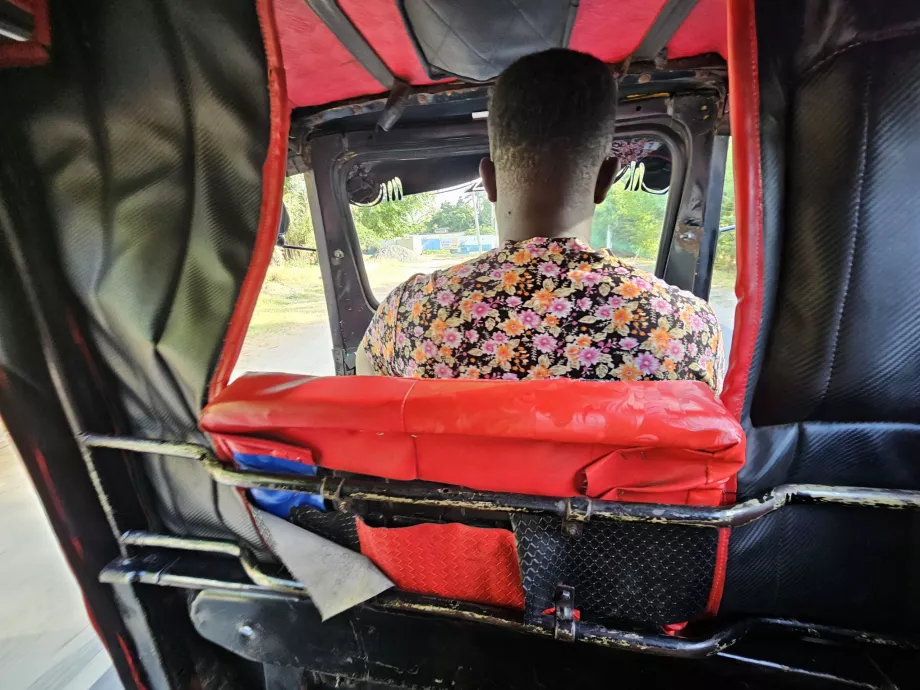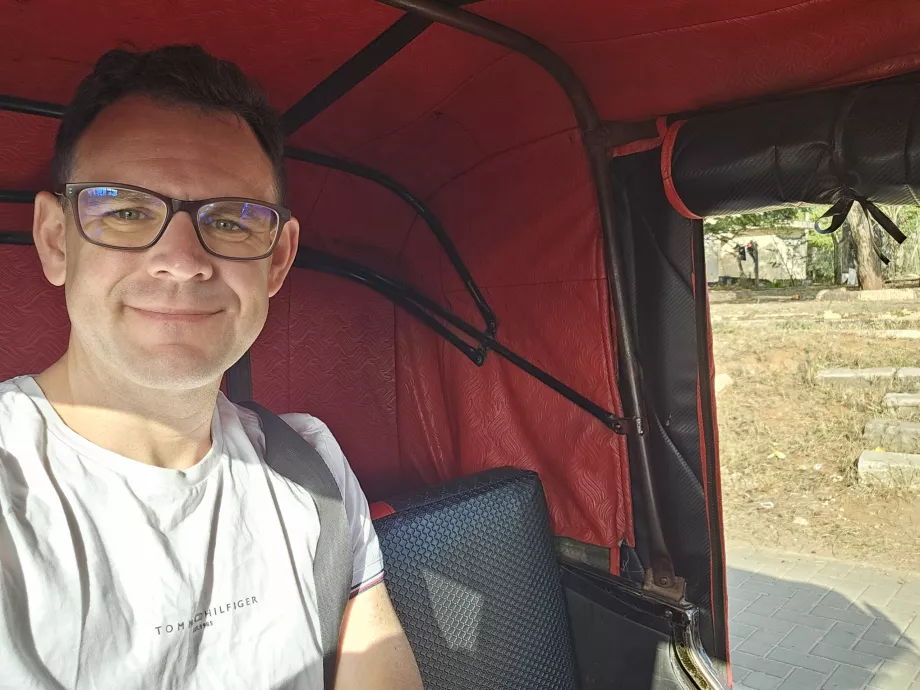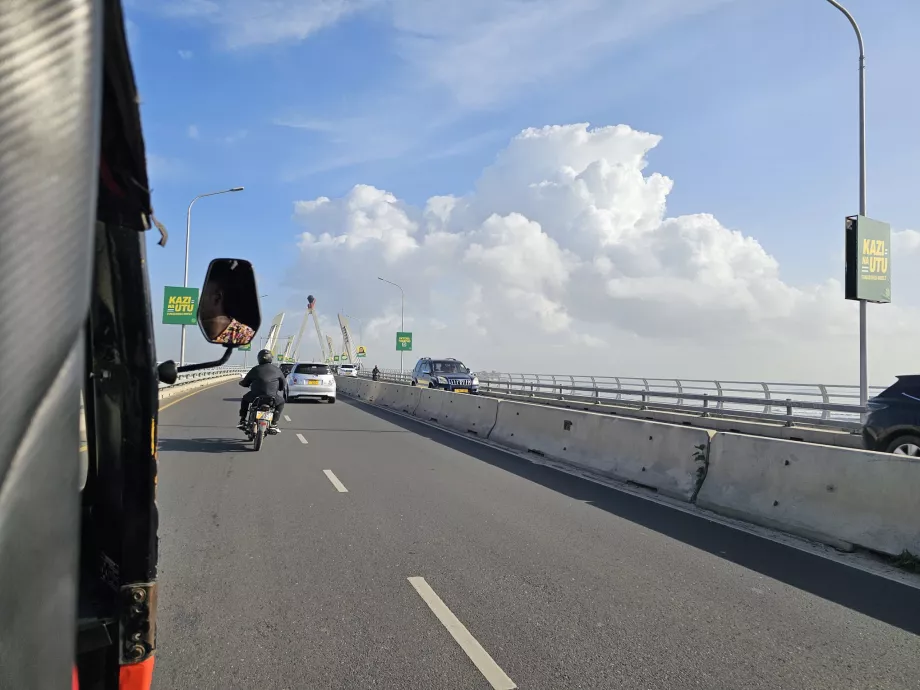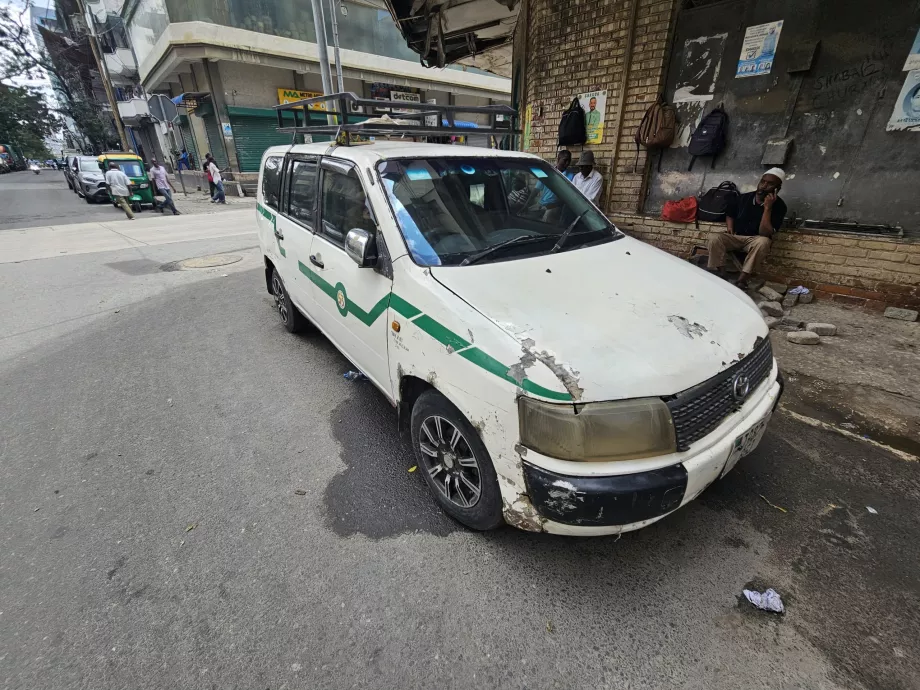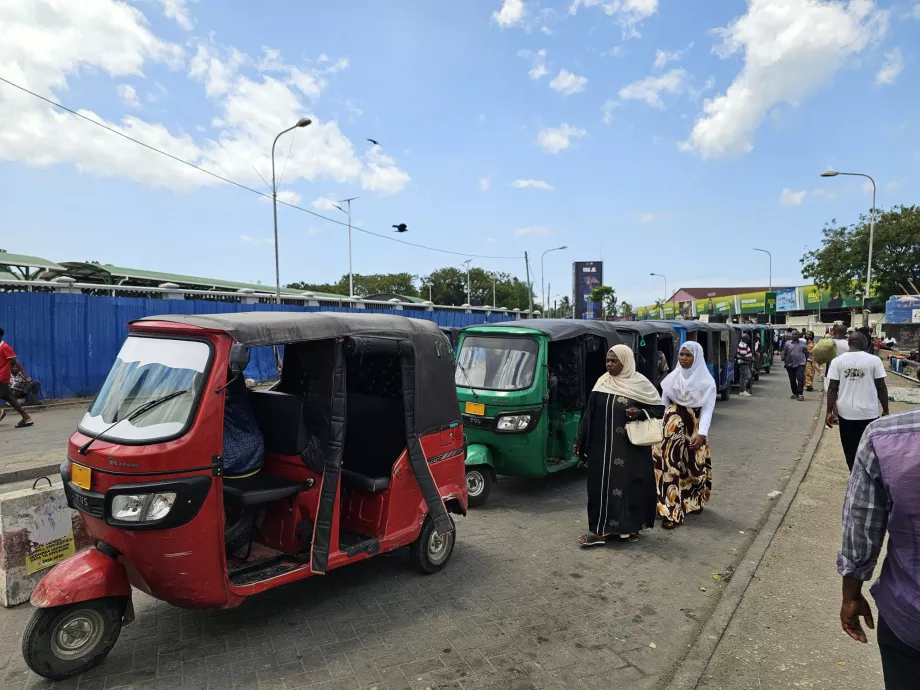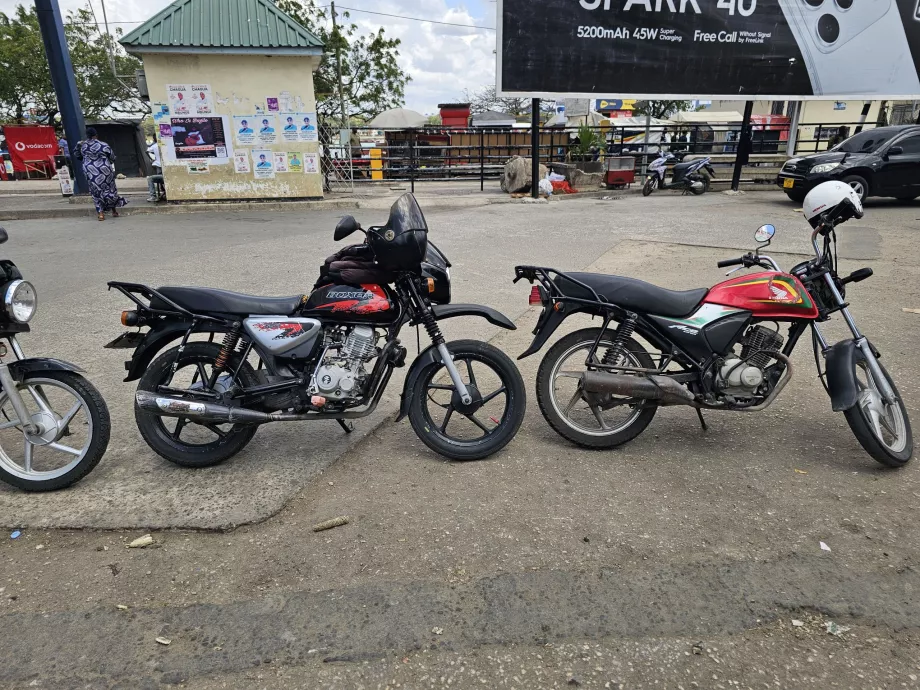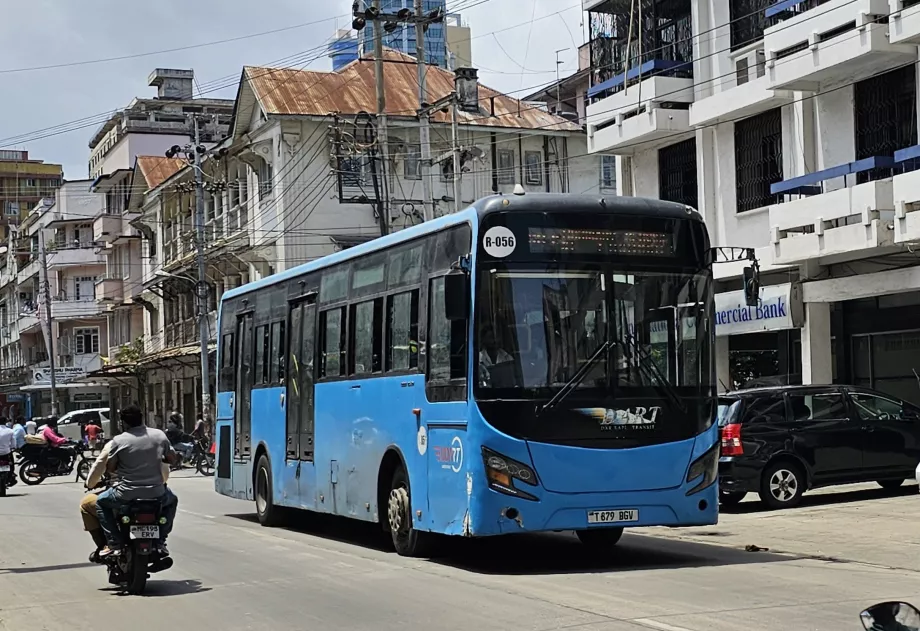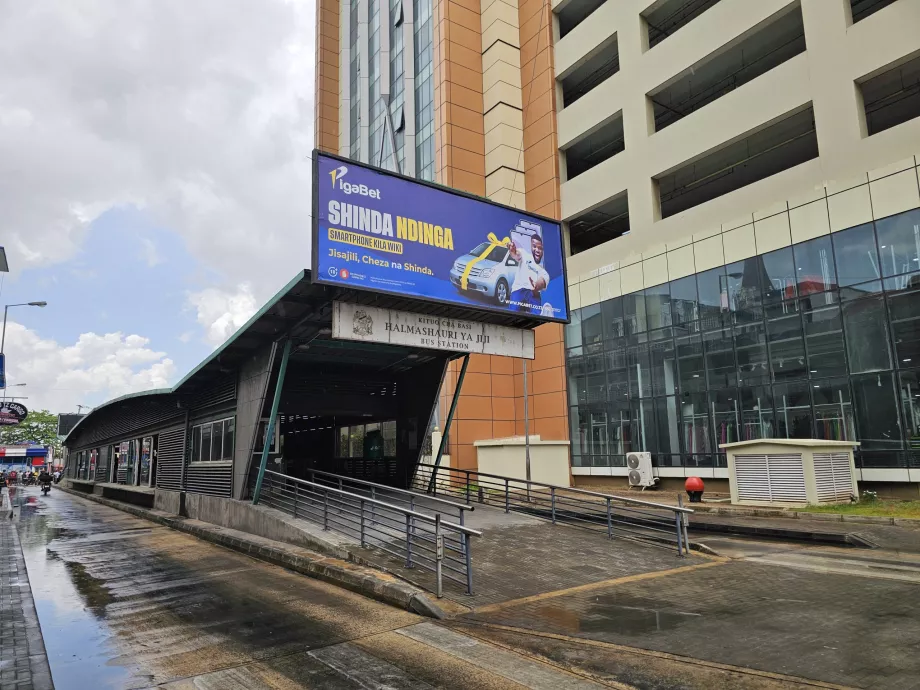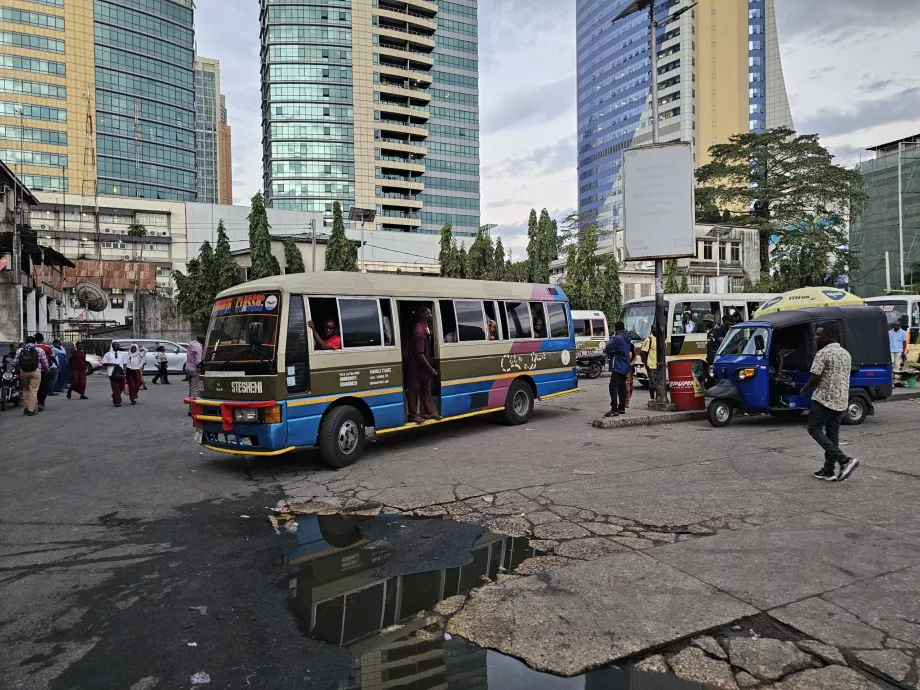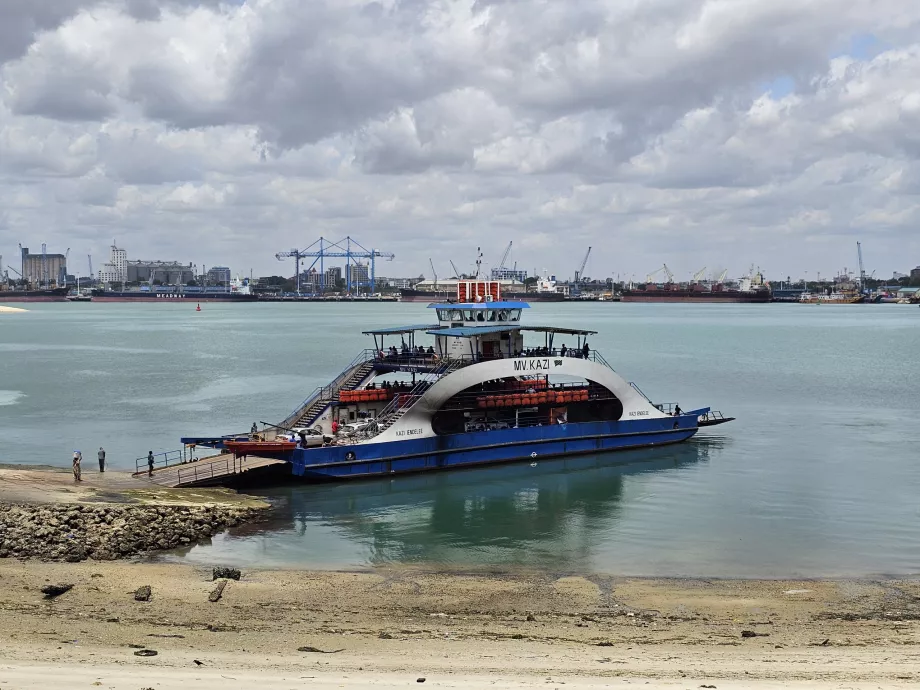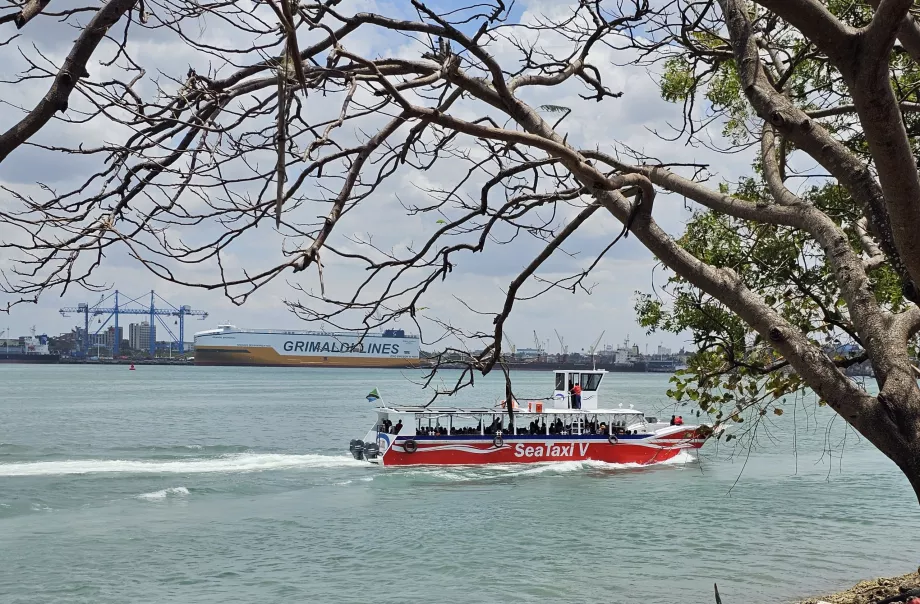Getting around Dar es Salaam
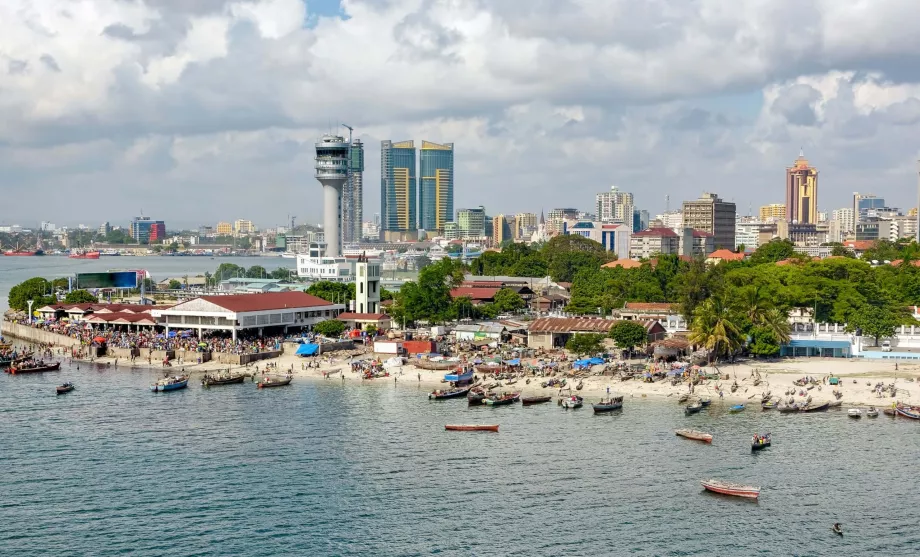
I walked within the centre of Dar es Salaam - the area is small, safe and you can walk the whole centre in 30 to 45 minutes.
Dar es Salaam does not yet have widespread public transport. This is currently provided by only 2 lines called Bus Rapid Transit.
For tourists, it is best to use the mobile apps Bolt or Uber, which work absolutely great here!
Top 10 hotels in Dar es Salaam
On foot
The centre is quite small in size, measuring roughly 2 x 2 kilometres. The streets mostly have wide sidewalks, just be especially careful of motorbikes when crossing as they can appear in any direction!
Within the centre, walking is often more efficient than taking a taxi, especially on weekdays when traffic jams form.
Walking is safe in Dar es Salaam. Are there dangerous areas and what to look out for? Find out in the Safety chapter.
Bolt or Uber - ride-sharing apps
If you want to venture further out of the centre, for example to Coco Beach (or other beaches), the train or bus station or the airport, we definitely recommend using the Bolt or Uber apps.
Both apps work great in Dar es Salaam.
Cars and tuk tuks are available absolutely everywhere at all hours of the day and night, and you'll rarely wait more than 5 minutes.
Paying by cash or card?
I've read on various discussion forums that drivers will often refuse a ride unless you choose the cash payment option.
I default to my credit card in both my Bolt and Uber accounts, which is automatically charged for the fare, and I used this option in Dar es Salaam.
I have never once had a driver refuse a ride.
Cars, tuk tuks and motorbikes
When travelling with Bolt and Uber around Dar es Salaam, you can choose from three options - a classic car, a bajaj (3-wheeler), which is a tuk tuk, or a motorbike (boda boda).
Regular cars are of course the most expensive, motorbikes the cheapest.
The biggest experience I had was riding a tuk tuk. It's significantly safer and more comfortable than a motorbike, and more authentic than a car.
Price examples - is the Bolt cheaper or Uber?
Prices are calculated based on actual demand, so below are just specific examples that I paid.
It's always worth comparing the price for both apps, but in general Bolt tends to be cheaper in most cases.
- Downtown - Slipway Hotel (ferry to Bongoyo Island): 10 000 tzs for a tuk tuk ride.
- Downtown - DAR Airport: 18 000 tzs for a car ride
Classic taxis
The official taxi is white with a green stripe and has several stops downtown.
But there aren't that many cars, and if you rely on flagging down a taxi on the street, you could be waiting for a very long time (easily more than 30 minutes).
Taxameters are non-existent and taxi drivers overcharge tourists many times the price compared to Bolt or Uber apps.
For example, a taxi driver wanted 50 000 tzs for a ride from the city centre to the airport and the lowest I was able to negotiate a ride was 30,000 shillings. Of course I declined and used Bolt.
Fats or motorbikes
The streets of Dar es Salaam are ubiquitous with bajaj (that's what they call tuk tuks in Tanzania) or boda bodas (again, that's the name for motorbikes).
Unless you use the Bolt or Uber apps, you'll always have to haggle over the price.
Find cheap hotels in Dar es Salaam
A journey within the city centre (for example, to the port or train station) should never cost more than 5 000 tzs, rather less for motorbikes.
However, chances are you'll never be able to negotiate a price lower than the Bolt and Uber apps will offer.
Modern buses - Bus Rapid Transit
Since 2016, the city has had a system of fast modern buses, operated by UDART.
The blue large and air-conditioned buses have their lanes set aside so they don't stand in traffic queues as much. However, they share traffic lights with other cars at intersections, so the ride isn't as fast as you might expect.
From a tourist point of view, buses don't have much use.
They run from the centre (from the port) to the outskirts of Dar es Salaam away from the tourist attractions.
The exception is the route along Nyerere Road, which passes about 500 metres from the airport.
Tickets and prices
You can buy a ticket at each station at the ticket office before boarding the bus.
Payment is in cash and Tanzanian shillings only and the price is the same for each journey - 750 tzs.
Timetables and routes
There is no official website for travellers, and apart from buses from the port via the railway station to the airport (not in operation until 2026), you will not use the buses as a tourist.
Buses usually run about once every 10 minutes.
Dala dala
Like everywhere in Tanzania, Dar es Salaam has minibuses called dala dala.
These connect the outskirts of the centre with the suburbs of Dar es Salaam and are not for tourists. They do not go to the beaches and there are no attractions in Dar es Salaam outside the centre and the coast.
If you do want to try a dala dala ride just for the experience, expect the buses to be considerably overcrowded.
Fares are payable in cash only to the conductor on alighting and cost 500 tzs.
Kigamboni ferry
Ferries run between the northern part of the port (near the Kivukoni fish market) and southern Dar es Salaam (Kigamboni district).
The small red boats serve foot passengers only and run from about 5:00 to 22:30 with a frequency of 5 to 10 minutes - fares are purchased in cash at the ticket office and cost 500 tzs.
The larger car boats sail about once every 20 minutes and the fee is 3 000 tzs.
Any questions left?
If you have any questions or comments about the article...

